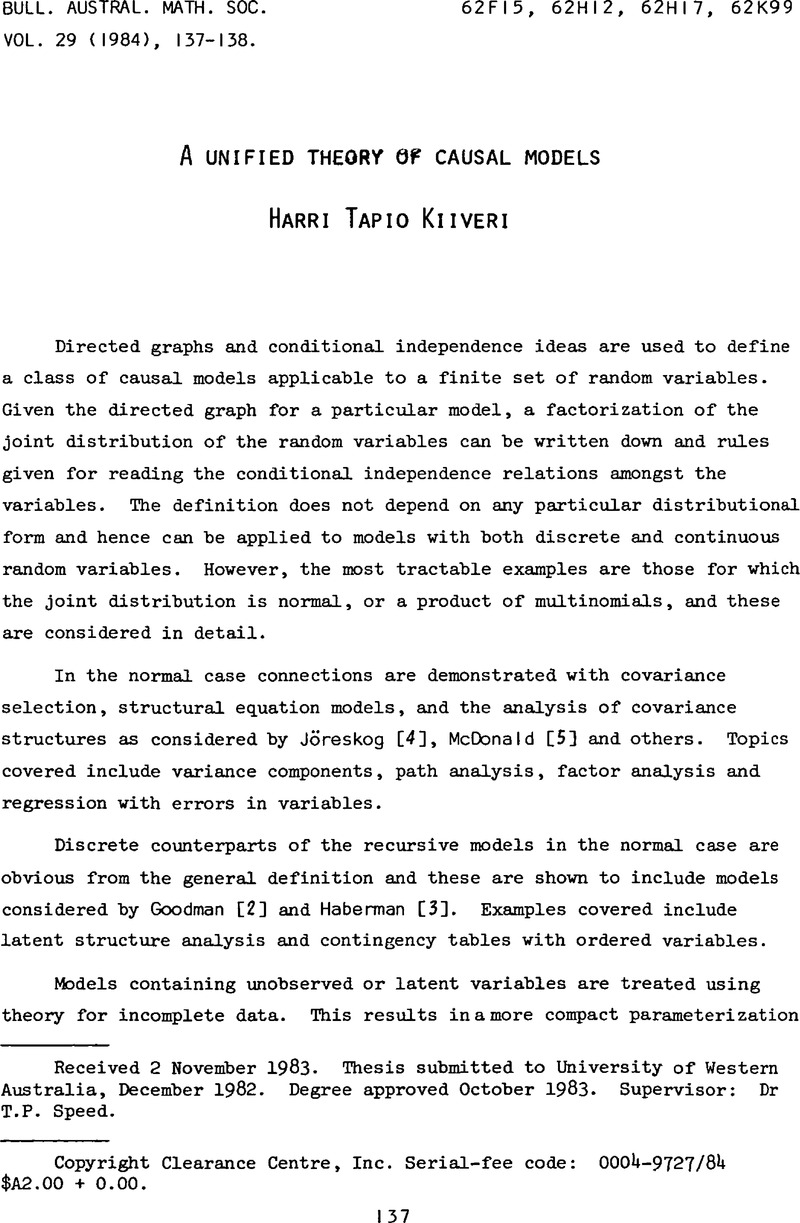No CrossRef data available.
Article contents
A Unified Theory of Causal Models
Published online by Cambridge University Press: 17 April 2009
Abstract

- Type
- Abstracts of Australasian PhD Theses
- Information
- Bulletin of the Australian Mathematical Society , Volume 29 , Issue 1 , February 1984 , pp. 137 - 138
- Copyright
- Copyright © Australian Mathematical Society 1984


